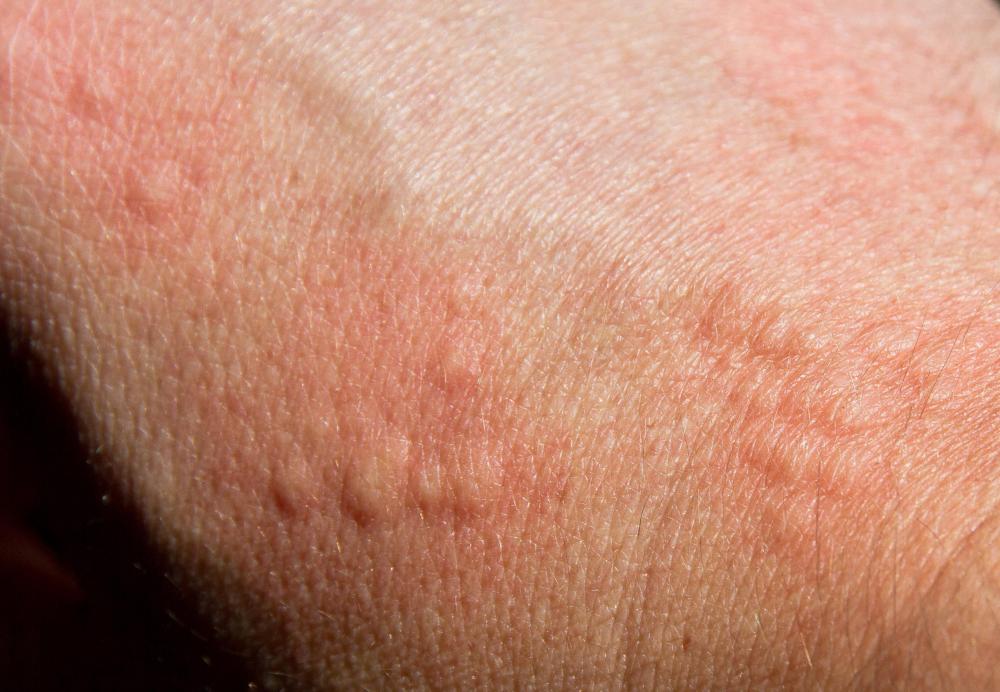At WiseGEEK, we're committed to delivering accurate, trustworthy information. Our expert-authored content is rigorously fact-checked and sourced from credible authorities. Discover how we uphold the highest standards in providing you with reliable knowledge.
What is Urtica Dioica?
Urtica dioica, also known as common or stinging nettle, is an herbaceous perennial plant native to Europe and Asia, and widely naturalized in damp, weedy areas of North America. The herb is best known for the small hairs that cover its leaves and stems. These hairs contain irritating chemicals that produce an unpleasant stinging sensation when touched. Once dried or boiled, however, stinging nettle loses its sting, and can be handled safely for use in a variety of herbal remedies, and for culinary purposes.
Nettle has been used for making cloth, as a garden fertilizer due to its high nitrogen content, and as a food, but the plant is most widely used as an herb remedy. The medicinal use of Urtica dioica can be traced back thousands of years, to a time when healers practiced urtication, or thrashing paralyzed limbs with bundles of stinging nettles. The ancient Romans also used this remedy to increase virility by thrashing the kidneys and lower torso below the navel. Today, we know that the stinging increases circulation when applied externally, although modern herbalists and healers rarely recommend this painful treatment.

In modern times, Urtica dioica has a variety of purposes, including some that have survived since antiquity such as treating coughs, tuberculosis, asthma and hair loss. The herb is anti-inflammatory, and works especially well for treating hives, rashes and other allergic reactions of the skin. It is believed to help relieve hay fever symptoms including runny nose and nasal congestion. European folk medicine dictates that stinging nettle can improve dandruff and excessively greasy hair when applied topically. The plant also increases milk production in breastfeeding mothers, provides iron to sufferers of anemia, and stops damaging tissue changes caused by lupus.

One of stinging nettle's most promising uses is the treatment of benign prostate hypertrophy (BPH), or a noncancerous enlargement of the prostate gland. Urtica dioica plant extracts made from the herb's roots decrease the rate of cell division in the prostate gland, and interfere with enzymes that promote cell growth in the prostate. As the cell growth is slowed, there is less pressure on the urethra, which allows urine to flow more easily. While nettle cannot decrease the current size of the prostate, it can relieve uncomfortable symptoms such as reduced urinary flow, the constant urge to urinate, and incomplete emptying of the bladder. Scientists are not yet sure why nettle reduces these symptoms, but some theorize that it may be because the plant contains chemicals that directly effect testosterone and other hormones.

For medicinal purposes, Urtica dioica is available in dried leaf form, extract, tincture or capsule. Tea made from the dried leaf is commonly used as a home herbal remedy for treating respiratory ailments, and as an overall wellness tonic. Extracts of the roots and leaves are available, and tinctures are typically made from the roots. Dosages vary depending on the condition being treated, and the current health of the patient. A qualified herbal or medical practitioner can prescribe a safe dosage of stinging nettle.
Individuals should not attempt to self-medicate using Urtica dioica supplements, especially when the condition is serious. Although generally considered safe for consumption, women who are pregnant or nursing should not take the herb, as it can contribute to miscarriage. In rare cases, consuming stinging nettle may cause upset stomach and fluid retention.
AS FEATURED ON:
AS FEATURED ON:













Discuss this Article
Post your comments